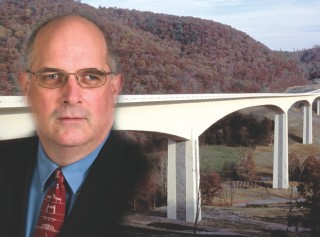William Wright, an associate professor at Virginia Tech’s civil and environmental engineering department is carrying out a study along with Robert J. Conner from the Civil Engineering department of Purdue University to formulate a method to analyse possible fractures in bridges and develop ways to avoid the same.
 William J. Wright, faculty member in civil and environmental engineering at Virginia Tech, is designing a fracture critical analysis system for bridges and improved fracture toughness specifications for structural steels used in critical members of low redundancy structures, such as two-girder bridge systems.
William J. Wright, faculty member in civil and environmental engineering at Virginia Tech, is designing a fracture critical analysis system for bridges and improved fracture toughness specifications for structural steels used in critical members of low redundancy structures, such as two-girder bridge systems.
The study was granted funds amounting to $350,000 and was sponsored by the Indiana Department of Transportation. According to Wright, the new plans to control and prevent fractures will lead to advancements in analysis of bridges by using computers and enable development of new materials to be used in bridges.
The highway administration presently uses a fracture control plan formulated in the 1960s. There have been no updations or enhancements to this plan due to high costs involved in the maintenance of bridges. Many new techniques have been used by engineers presently to analyse bridges and the materials used in them. A particular example will be a three-dimensional elastic finite element system, which helps in studying the internal load re-distribution of bridges that have been damaged. However this system presents a major hurdle in usage as it might over estimate the strength and reliability of bridges when all the facts are not included for consideration. To prevent such issues, the scientists are looking at developing a comprehensive solution, which includes all key factors such as the connections available in the structure, fatigue limits and fracture limits of the steel, system stability and the general condition of the bridge in order to help engineers arrive at a conclusion regarding the strength of the bridge. This approach is also likely to reduce costs and thus encourage the use of advanced materials. Due to technical advancements new bridges are likely to have lesser issues.